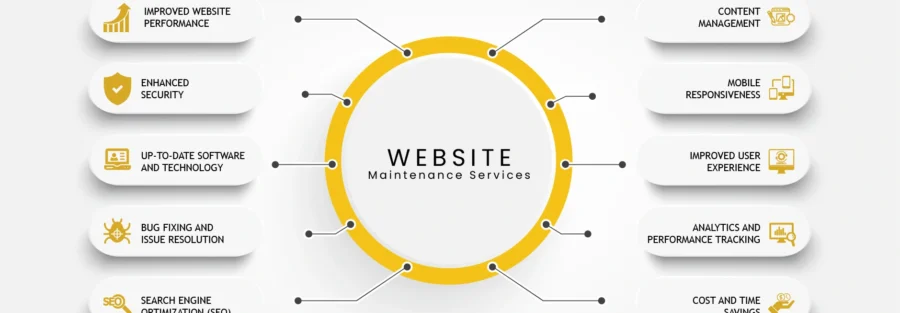Responsive Web Design is a design approach aimed at crafting websites that provide an optimal viewing and interaction experience across a wide range of devices and screen sizes. In essence, it ensures that a website adapts and responds dynamically to the user’s device, whether it’s a desktop computer, laptop, tablet, or smartphone.
The core principle of Responsive Web Design is flexibility. Instead of creating separate versions of a website for different devices, responsive design utilizes flexible grids, layouts, images, and CSS media queries to automatically adjust the layout and content based on the screen size and orientation. This results in a seamless and consistent user experience, regardless of the device being used.
Responsive design not only enhances usability and accessibility but also improves search engine rankings, as search engines like Google prioritize mobile-friendly websites in their search results. Moreover, responsive design future-proofs websites, ensuring they remain functional and effective as new devices and screen sizes emerge.
Learn More – Monthly Website Maintenance Packages
In today’s digital landscape, where mobile devices dominate internet usage, responsive web design is no longer a luxury but a necessity. It enables businesses to reach and engage with a wider audience, improve user satisfaction, and stay competitive in an increasingly mobile-centric world.
Responsive web design plays a crucial role in the success of a website in today’s mobile-centric world for several reasons:
Improved User Experience (UX): Responsive Web Design Packages ensures that websites adapt seamlessly to various screen sizes and devices, providing users with a consistent and optimized experience across desktops, laptops, tablets, and smartphones. This results in easier navigation, faster load times, and better readability, enhancing overall user satisfaction and engagement.
Increased Mobile Traffic: With the widespread use of smartphones and tablets, more users are accessing the internet on mobile devices than ever before. Responsive design ensures that websites are accessible and user-friendly on mobile devices, allowing businesses to reach and engage with a larger audience and capitalize on the growing trend of mobile browsing.
Higher Search Engine Rankings: Search engines like Google prioritize mobile-friendly websites in their search results, as they provide a better user experience for mobile users. Responsive design helps improve a website’s mobile-friendliness, leading to higher search engine rankings, increased visibility, and more organic traffic.
Cost-Effectiveness: Maintaining separate desktop and mobile versions of a website can be costly and time-consuming. Responsive design eliminates the need for multiple versions of a website, as it automatically adjusts to different screen sizes and devices. This streamlines the development process, reduces maintenance efforts, and ultimately saves businesses time and money.
Future-Proofing: Responsive Web Design Packages is adaptable and scalable, making it well-suited for the rapidly evolving landscape of digital devices and screen sizes. As new devices with varying screen dimensions emerge, responsive websites can easily accommodate these changes without the need for extensive redesigns or modifications.
Enhanced Conversion Rates: A seamless and user-friendly browsing experience on mobile devices can lead to higher conversion rates and increased sales or conversions. Responsive design ensures that key elements such as calls-to-action, forms, and checkout processes are optimized for mobile users, making it easier for them to engage with and complete desired actions on the website.
In summary, responsive web design is essential for ensuring that websites remain competitive, accessible, and effective in today’s mobile-centric world. By prioritizing user experience, accessibility, and search engine visibility, responsive design contributes to the success and longevity of websites across various devices and screen sizes.
Get Further Information on – What steps are involved in the website development process, from planning to deployment?




